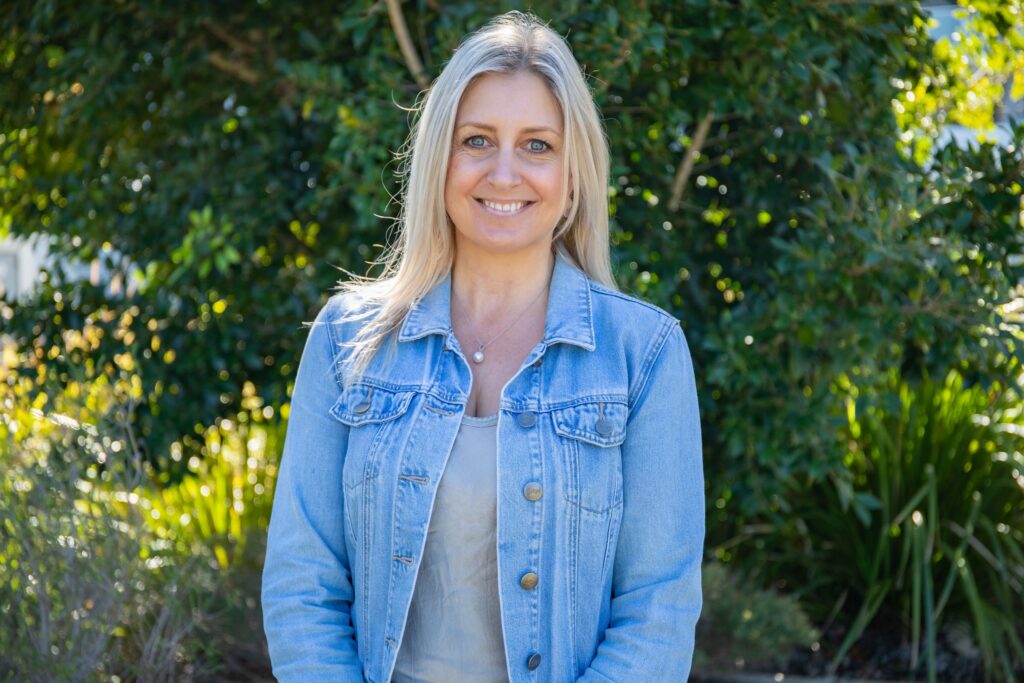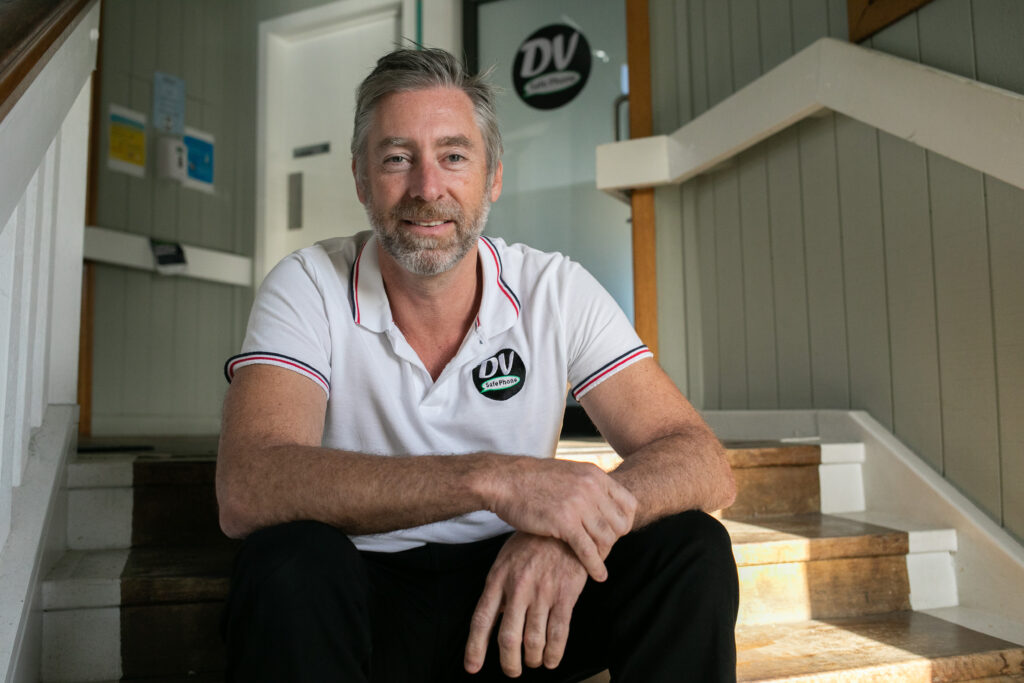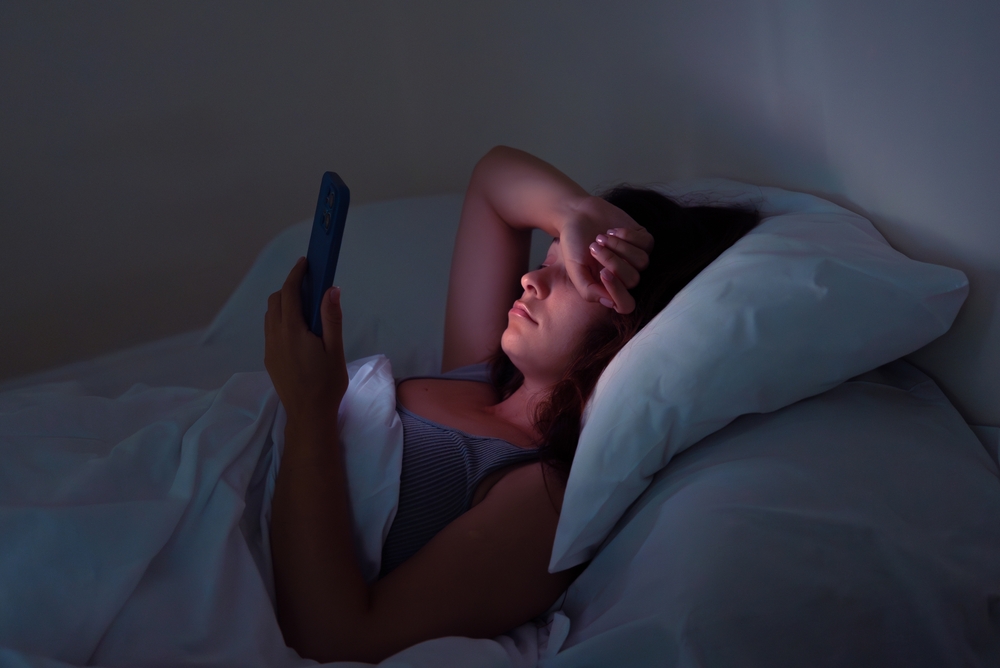In the early 2000s, Lauren Trevan received a text message from an old school friend. They began texting each other, reconnecting after years of losing touch, using this fairly new form of technology.
That was until Lauren’s abusive husband found out. His ongoing fury over her relationship with this old friend wore her down so much, she decided to never contact her friend again.
The incident was the start of a cycle of surveillance, interrogation and constant monitoring of her actions online. Looking back now, Lauren recognises this as much more than overbearing overprotection, it was in fact, technological abuse.
“I don’t want anyone ever again to go through what I went through,” Lauren told Women’s Agenda recently. “No one deserves that.”
Decades on, Lauren is now a volunteer with the not-for-profit organisation, DV Safe Phone. It’s a charity that is breathing new life into the millions of old mobile phones that often sit idly in our cupboards at home, and giving them to those who need it most: victim-survivors of domestic violence.

According to data from DV Safe Phone, more than half (57 per cent) of domestic violence victim-survivors say their perpetrators check their phones and text messages without their consent “all the time”. Having a mobile phone can quite literally save a person’s life, saving them from a violent relationship.
This year, for UN Women’s 16 Days of Activism Against Gender-Based Violence, founder and CEO of DV Safe Phone, Ashton Wood is calling on Australians and workplaces around the country to donate their phones to the charity.
In her work with DV Safe Phone, Lauren often finds herself wondering if her experience with domestic violence would be any different, had she had access to a service like this.
“To have that privacy, that extra phone, a safe outlet,” Lauren said.
“Our phones are our lifeline now… to give a phone that no one else knows about and is untraceable by a perpetrator… it’s a vital lifeline.”
A toxic cycle
Lauren met her ex husband when she was 19 years old. He was in his late twenties, a charming, mesmerising man.
“He was fantastic at first,” Lauren said. “He doted on me all the time, sent me beautiful emails, took me on holidays, bought me gifts.”
Within a year, they moved in together, and he continued to be the ever-loving man she thought him to be.
Lauren now knows she was being “love-bombed” – because it wasn’t long before she noticed a pattern.
It started one day when he came home drunk at four in the morning. She was in bed when he suddenly switched the lights on, accusing her of being with another man. His accusations stemmed from the way the toilet paper was positioned in the bathroom.
“That was my first red flag,” Lauren said, “where I should have just gotten up right then and ran.”
It wasn’t the only time this happened. Lauren began noticing him losing his cool over small, seemingly insignificant things that were enough to trigger a torrent of abuse – the way his socks were folded, Lauren purchasing different types of margarine, the lid on the toothpaste being incorrectly placed.
“When he would lose his cool and have a go at me about something, it was always very intense, and hours long,” Lauren said.
“He wouldn’t speak to me for days and days at a time after that.”
But after an outburst always came a barrage of love-bombing – a “honeymoon period”, as Lauren describes it. And this was a cycle that continued for years.
“This cycle started quite early on, and I can see it now, but back then it was very hard to see those signs,” she said.
“I really wanted to believe his story of that happy future he promised.”
Coercive control
By 2014, Lauren had married her abuser and started a family with him. By then, the “honeymoon periods” she remembered so fondly had completely disappeared.
“He would just treat me with such ambivalence,” Lauren said. “It was just as if I wasn’t there.”
At one point, Lauren tried leaving the relationship, to which he responded with threats to end his own life. When she agreed to stay, he promised he would change. But he never did.
Looking back, Lauren now knows this behaviour to be coercive control, defined as a pattern of abusive behaviours from a perpetrator over time that “creates fear and denies liberty and autonomy”.
According to the Australian Institute of Health and Wellbeing, 23 per cent of women experience coercive control.
And according to statistics from DV Safe Phone, 70 per cent of women who experienced abuse had never separated from a violent partner, often due to financial dependency and a lack of independence because of coercive control.
“I was just so miserable,” Lauren said, “but I was terrified of what he would do if I tried to leave.
“I just got completely stuck.”
Technological abuse
Lauren has never forgotten the first time he invaded her privacy on her mobile phone. And losing that high school friend after reconnecting through text messaging was not the last time he would abuse her privacy and freedom like that.
By the 2010s, as social media became ever-present in society, Lauren found her husband constantly tracking her phone, viewing her private messages, before questioning her about who she was in contact with.
Lauren is not alone: 57 per cent of domestic violence victim-survivors say their perpetrators check their phones and text messages without their consent “all the time”.
What’s more, in domestic violence, mobile phones are often the first things to be broken or destroyed by a perpetrator.
Ashton Wood is the CEO of the not-for-profit charity DV Safe Phone, an organisation providing free, repurposed mobile phones to women escaping a violent situation.

His organisation began with a conversation he had with a friend of his, a police officer in Queensland. She told Wood just how crucial mobile phones can be in saving the lives of women, and how dangerous it can be when their perpetrators take that freedom away.
Research shows there are about 22.3 million redundant mobile phones that gather dust in people’s homes, before ending up in landfill. So Wood had an idea.
Wood, who has a background in IT, reached out to his connections on LinkedIn, asking people to find old phones in their cupboards for him, so he could repurpose them and give them to his police officer friend.
It was at this moment, in 2020, that DV Safe Phone was born, and since then, Wood and his organisation have repaired, repurposed and gifted tens of thousands of mobile phones to victim-survivors across the country.
In the lead up to the 16 Days of Activism Against Gender-Based Violence, which begins on Monday 25 November, Wood is appealing to organisations in Australia to make a tangible difference by donating their mobile phones to the charity.
“For every phone we distribute, a victim gains a crucial tool to reach out for help, connect with loved ones, and take steps towards rebuilding their life,” Wood said.
“One way to support DV victims is to encourage your workplace to actually talk about it. Organisations by law now need to have a domestic violence policy and provide leave to staff experiencing domestic violence.
“By participating in the 16 Days of Activism and donating old phones to DV Safe Phone, businesses can help to ensure that every call for help is heard, and not only that, but it can also be a starting point for discussing domestic violence support in a compassionate and non-triggering manner in the workplace.”
‘A vital lifeline’
Lauren’s abuser is now in jail. In 2015, she became aware that there was a police investigation involving her husband in relation to messages he had sent to teenage girls – friends of Lauren’s daughters, girls who had been inside their home.
Seven victims came forward to accuse him. Lauren left her husband the day she read the messages he had sent to the girls. In 2018, he was found guilty and sentenced to 14 years in prison.
The strength of the seven victims to speak out against her husband is how Lauren finds the strength to tell her own story.
“I want the shame sitting where the shame belongs,” Lauren said.
“And if we’re all silent about any type of abuse, when we’re holding the shame, nothing is ever going to change. It’s only aiding the perpetrators.”
Now, as a volunteer for DV Safe Phone, she hopes that no one has to go through what she and those young girls went through.
“Our phones are our lifeline now,” Lauren said.
“To give a phone that no one else knows about and is untraceable by a perpetrator… it’s a vital lifeline.”
Lauren has written a book about her experiences called Now I See You.
If you or someone you know is experiencing, or at risk of experiencing, domestic, family or sexual violence call 1800RESPECT on 1800 737 732, chat online via 1800RESPECT.org.au or text 0458 737 732.
If you are concerned about your behaviour or use of violence, you can contact the Men’s Referral Service on 1300 766 491 or visit www.ntv.org.au.


